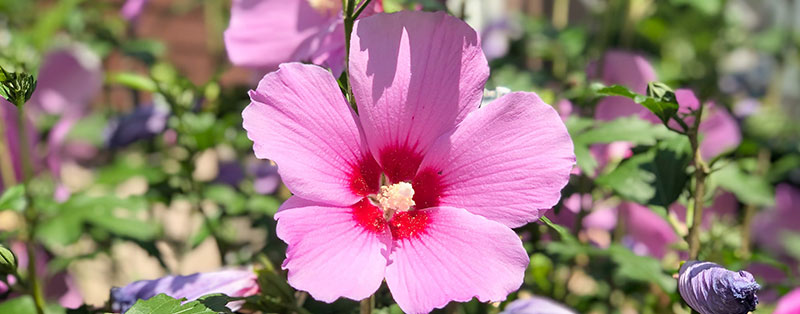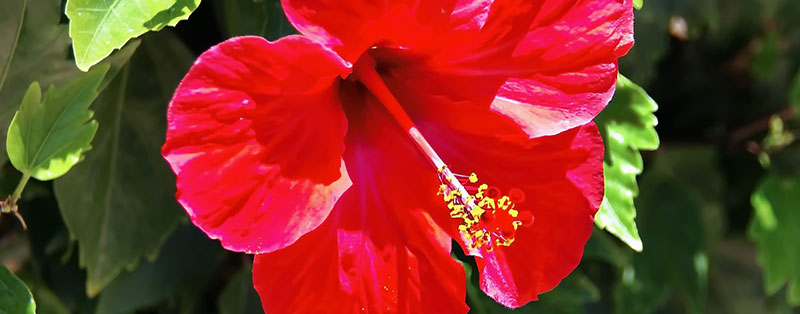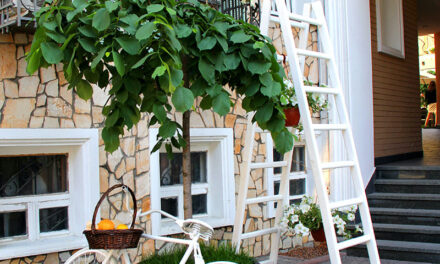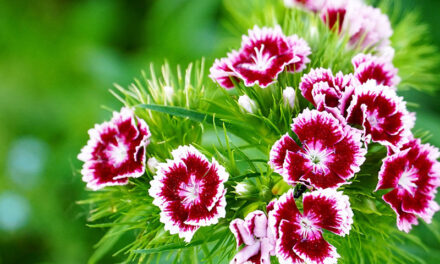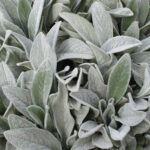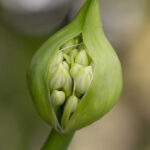Hibiscus is known by several names, garden hibiscus, athea bush, or by its scientific name Hibiscus Syriacus. This beautiful perennial is related to the Chinese rose, which can be kept as a houseplant. Chinese rose is known by the scientific name Hibiscus Rosa Sinensis.
Hibiscus is famous for its profusion of large purple, blue, pink or white bell-shaped flowers. It is an attractive plant for bees, bumblebees and butterflies, partly due to its beautiful long flowering. Check out these articles for more plants that attract bees or butterflies.
Hibiscus
Hibiscus originated in the area around the Mediterranean Sea. It is a deciduous shrub or small tree that can reach 2 to 3 meters in height. The flowers appear on the shrubs in the months of July, August, September and depending on the weather, even in October. There are single-flowered and double-flowered varieties, with the single-flowered varieties being the most hardy of them.
Hibiscus enjoys a sunny, sheltered spot in your garden, preferably in the morning sun. If the afternoon sun is too bright, there is a chance that the flowers droop a bit and fall off quickly. The plant grows slightly less quickly in bright sun.
Hibiscus bush
When the hibiscus shrub is not pruned, it develops its branches naturally in a vase type of shape. After the hibiscus is grafted onto a rootstock, it often grows and remains a bit lower. The shrub can grow up to 3 meters high, if it is placed in a comfortable position.
Hibiscus tree
Hibiscus are grown in shrub form or as a small tree on a trunk. Because of the amount of flowers that it grows, it is a very suitable type to plant in your border as a solitary. The tree and the shrub often start a bit later with the production of leaves and flowers. But you can enjoy it for a long time until late summer.
Hibiscus varieties
There are 200 to 220 hibiscus varieties, one of which is the Chinese rose. The types of flowers you see in this ornamental shrub differ from smaller shapes, large flowers, double flowers, and somewhat crinkly flowers. The colours vary from stark white to different shades of blue, purple, pink and salmon.
Hibiscus syriacus
Hibiscus Syriacus is the only hardy type you can plant in your garden. If you plan to let the plants hibernate frost-free, there are several options for that. Hibiscus Syriacus is available in different types and colours.
Hibiscus syriacus ‘Oiseau blue’
A well-known type with the bluest of flowers. The flowers appear on the bush starting from early August. The flowers open during the day and close at night. It is a well-formed shrub that grows up to about 175 centimeters in height.
Hibiscus syriacus ‘Red Heart’
This type is grown both as a shrub and as a tree. The flowers are bell-shaped and white in colour with a striking red heart. The tree shape can reach a height of up to 5 meters whereas the shrub can grow to about 3 meters in height.
Hibiscus syriacus ‘Duc de Brabant’
This is a type with double filled purple-pink flowers. The pink flowers appear on the shrub in August and continue to bloom in to October. The height of this shrub is about 2 meters when mature.
Hibiscus sinosyriacus
This one is a moderately, hardy type with single flowers. Like the Syriacus variety, this flowers late in the season. Types in lilac, purple, white and pink are then grown.
The extraordinary Chinese rose
The Chinese rose, Hibiscus Rosa Sinensis, is a special and well-known species. The shrub, which originates from China, is evergreen but not hardy. It is related to the garden hibiscus. When you have sufficient space to let the shrub hibernate, the best temperatures would be between 12 and 15 degrees Celsius. The Chinese rose is enjoyed outside in the summer. However, it does not always respond well to displacement therefore it is also not really recommended. It is best to keep this plant as a houseplant. The plant does like sufficient attention and fertilising.
A Chinese rose plant is available in very joyous colours: white, orange, yellow, red, purple and pink. The leaf of the Chinese rose is pointy and shiny green.
Chinese rose on a stem
If you want to purchase a Chinese rose on a stem, you simply remove the branches at the bottom of the stem. Just as long until the rose has reached the shape and height you prefer.
Is the Chinese rose hardy?
The Chinese rose is certainly not hardy. It needs at least a temperature of 12 to 15 degrees Celsius to hibernate. Therefore, it is better to keep it as a houseplant. If you want to put it on your balcony or in your garden in the summer, make sure it is protected from the wind, rain and windy weather conditions.
Chinese rose care
You can prune a Hibiscus Rosa Sinensis to the shape you want. It is not a problem either if you use the secateurs with a bit force.
The Chinese rose is pruned the best in February. The plant will then start to create new shoots and branches from the bottom.
Pruning Hibiscus
Technically, the hibiscus does not need any pruning, because it naturally has a beautiful shape. In the first year, you can cut all the branches back by half during spring to stimulate growth and flowering. You can also apply shape pruning which you can perform in March. Dead and damaged branches can be pruned away at any time.
The hibiscus flowers on annual wood. If you want to rejuvenate the shrub, prune part of the branches one year and the rest the following year. This will prevent you from being without any blooming for a year.
Hibiscus cuttings
The hibiscus seeds itself very easily. New shoots form from the buds around the roots of the bush. You can cut this shoot diagonally with a sharp knife or sharp secateurs. Place the cutting with one eye above the ground in a mixture of peat dust or good potting soil. You can also use cutting powder. Keep the cutting moist and place it in a shady place for the first few weeks. When the cutting is established, you can plant it out in a pot or in the ground.
Moving Hibiscus
If you want to move your hibiscus, it is best to do so in early spring, in the month of March. Prune the shrub back considerably and extend the plant well around the roots. Plant it in the right place adding nutrient-rich soil and make sure to water it well. The plant will recover quickly this way and start creating new branches.


